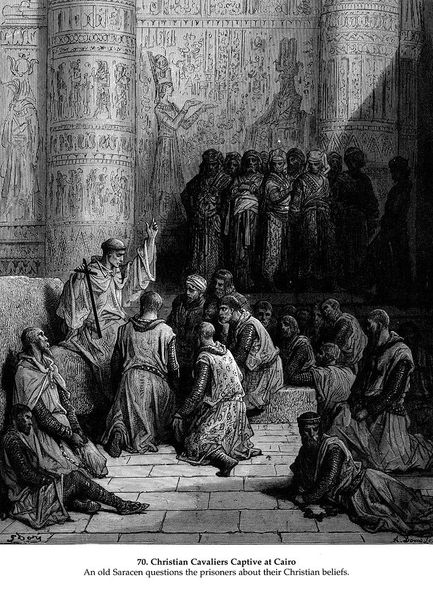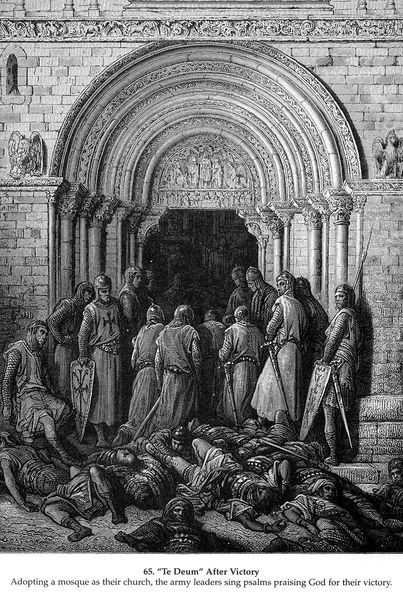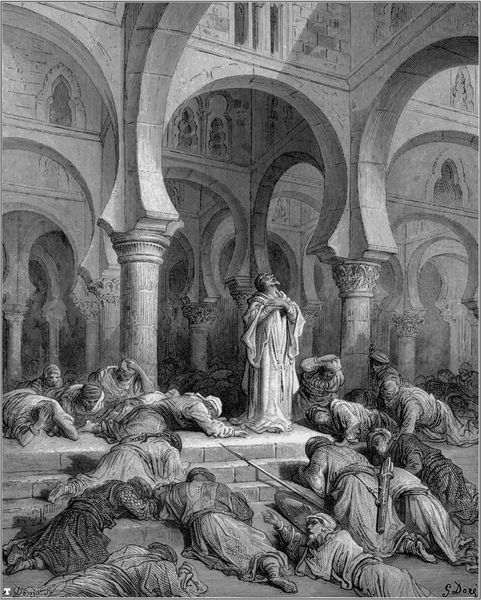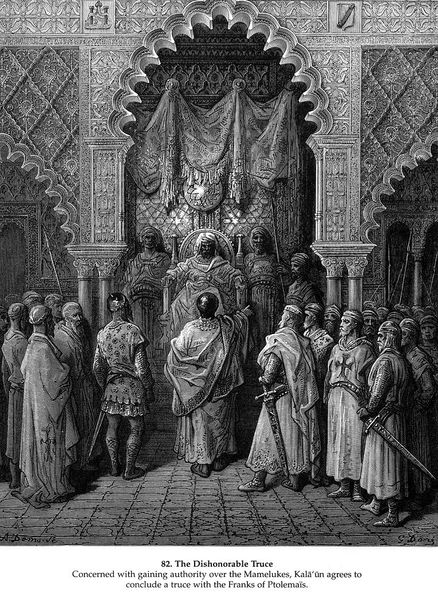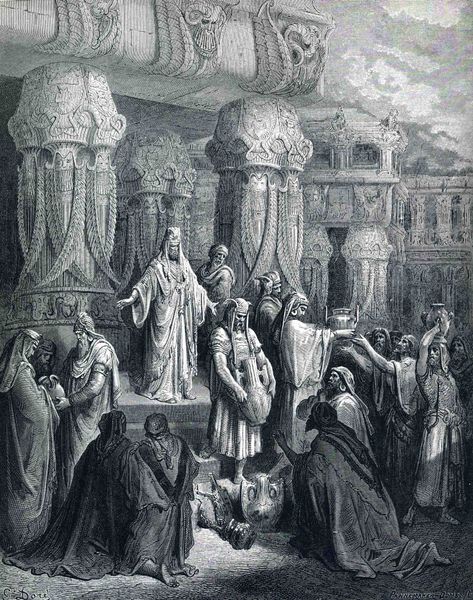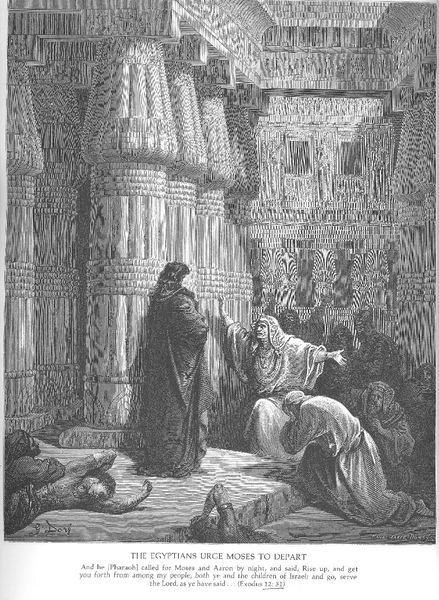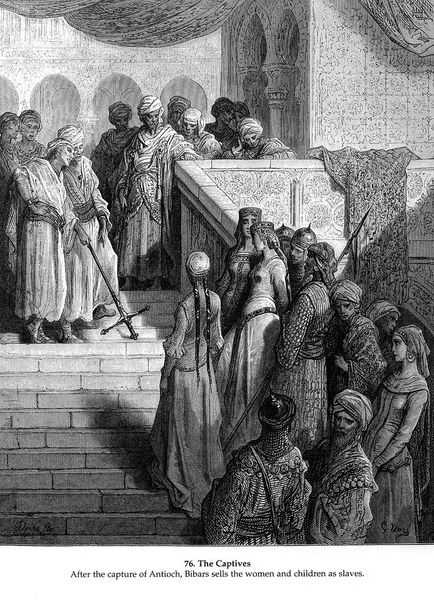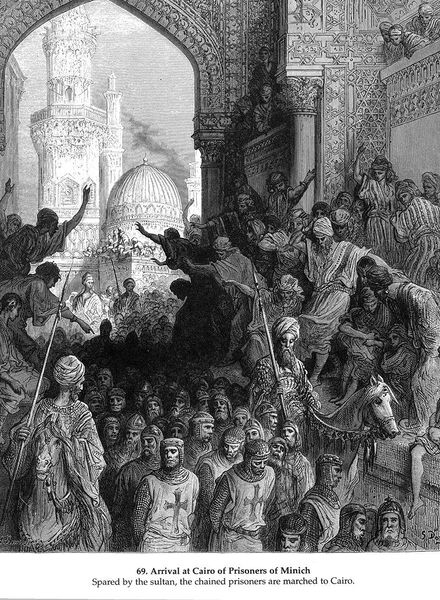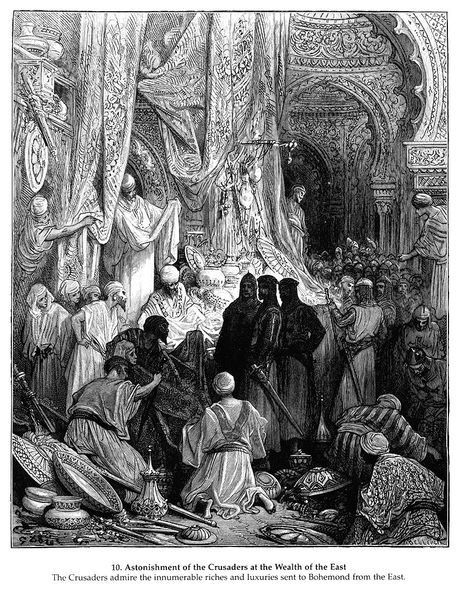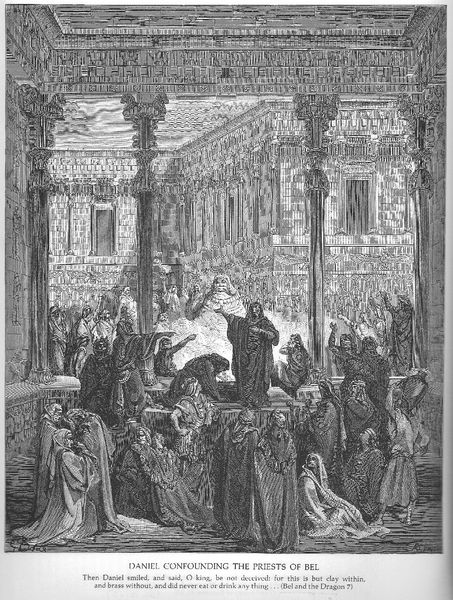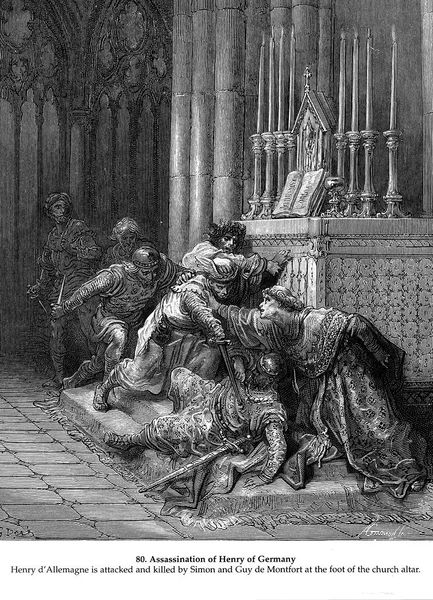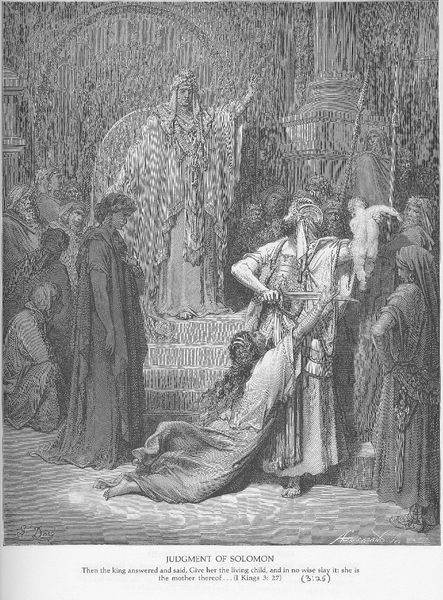
drawing, paper, ink, engraving
#
drawing
#
narrative-art
#
charcoal drawing
#
paper
#
charcoal art
#
ink
#
romanticism
#
orientalism
#
history-painting
#
charcoal
#
engraving
Copyright: Public domain
Editor: Here we have “The Emir’s Head Shown in the Seraglio,” by Gustave Dore. It appears to be a drawing using ink and charcoal, perhaps also an engraving. The intense detail is incredible; the patterns in the architecture almost overwhelm the figures in the foreground. I’m curious, what catches your eye in this piece? Curator: I am immediately drawn to the process of creation itself. Consider the labour involved in producing such a detailed engraving. Look at the materials used: ink, charcoal, paper. These were not luxury goods. Dore used readily available, mass-produced materials to depict a scene of power and privilege. Does that juxtaposition strike you as particularly poignant? Editor: Absolutely. The "high art" technique contrasts sharply with the subject. Curator: Exactly! Furthermore, observe how the composition itself replicates a system of production. The intricate background functions almost as a patterned textile, mass-produced for consumption. The women themselves are positioned as commodities within the seraglio, passively receiving this spectacle of power. Where do you think Dore situated himself regarding such commodification of both art and women? Editor: It’s like he's critiquing the whole system, by depicting its brutal reality in an accessible, reproducible medium. But then, by creating it, is he also participating in it? Curator: Precisely. Dore's artwork illuminates how even acts of purported resistance are embedded within systems of production and exchange. This drawing invites us to interrogate the relationship between artistic labour, social power, and the means of representation. Editor: So, it's not just about what is depicted, but how the depiction is made and circulated. I hadn't considered the materials themselves carrying so much meaning. Curator: Materiality matters! By understanding the production and circulation of images, we gain insights into the social conditions they reflect and perpetuate. Editor: Thanks, I’ll definitely look at artwork through that lens now. It adds a whole other layer to how we can interpret it.
Comments
No comments
Be the first to comment and join the conversation on the ultimate creative platform.
